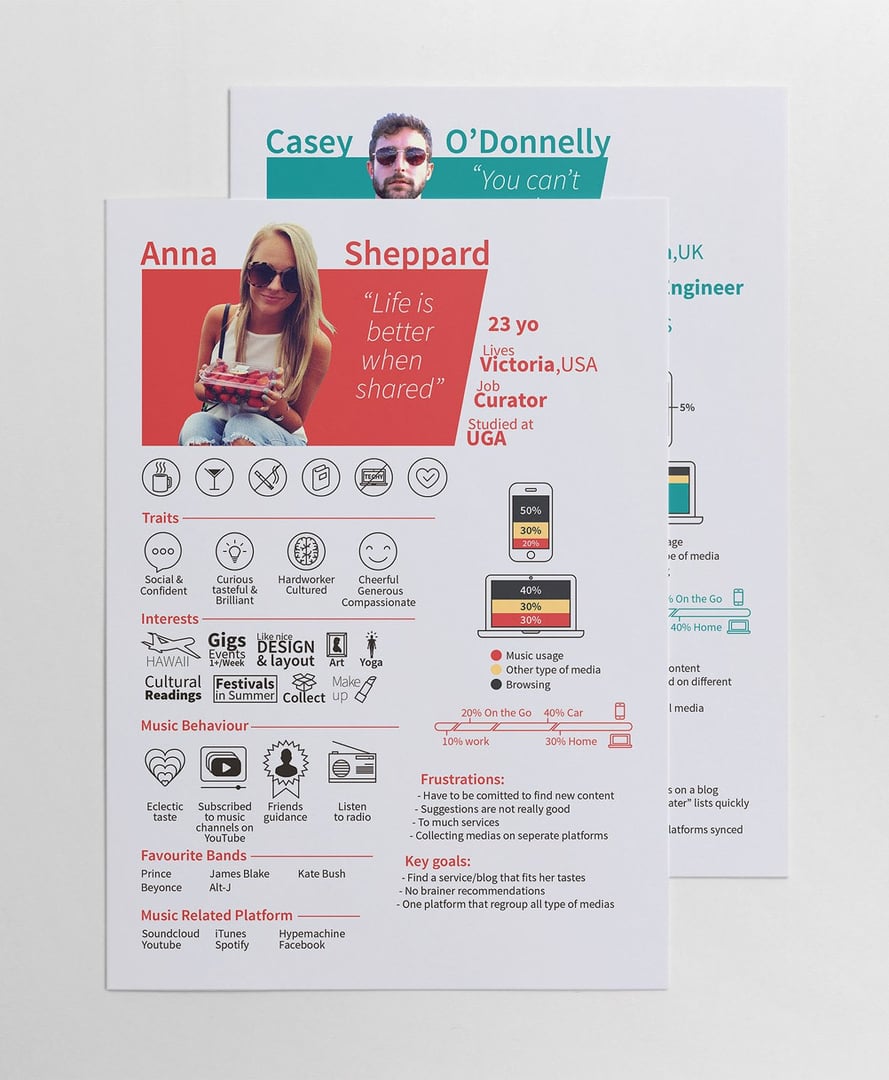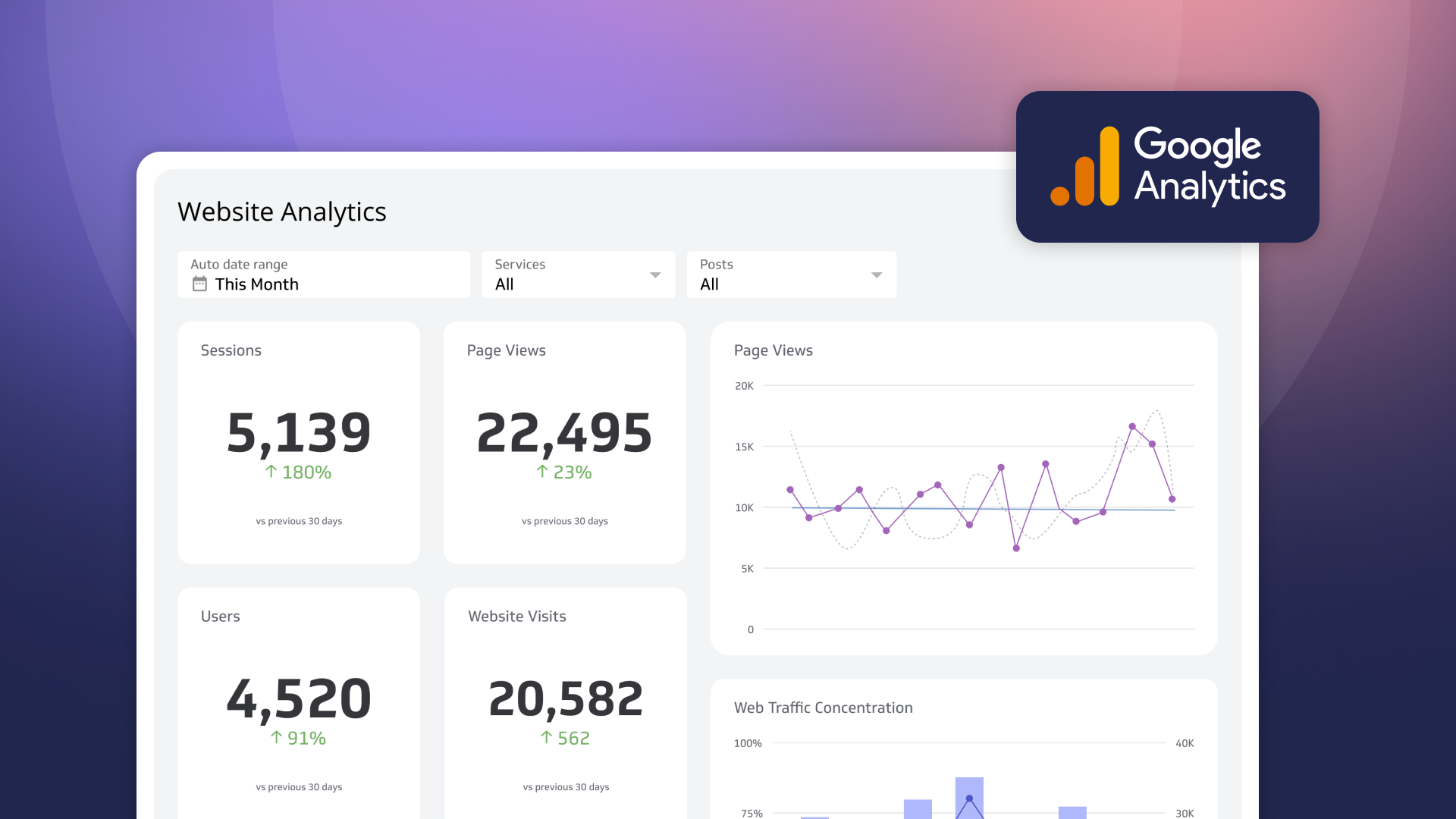A guide to using psychographic data in your marketing strategy

Published 2023-03-27
Summary - Take your marketing strategy to the next level by using phychographic data to tap into the minds of your customers.
You know most of what there is to know about your closest friend. Because of shared interests, values and the like, you enjoy spending time together. There’s a similar relationship between customers and brands.
The more you “get” your customers, the more they’ll want to spend time with your brand.
When you have a deep understanding and knowledge of your customers, you can align your messaging with their interests, opinions, and attitudes. This means your target audience is more likely to engage with your brand, buy from you and become loyal customers.
Entrepreneur and conversions expert, Jeremy Smith says psychographics is...
“the greatest thing that ever happened to marketing in general and conversion optimization in particular.”
It’s a bold claim. But the truth is, you can use psychographic data to greatly advance your marketing strategy. Let’s take a look at how it all works…
What is Psychographic Data?
There’s a strong case for marketing personalization. Eighty-five percent of marketers say that customers expect a personalized experience. And 90% see some measurable lift from personalization.
Psychographic data helps you gain a deeper understanding of your target audience so that you can personalize your marketing efforts. Demographic and psychographic data comprises the traits and characteristics of your customers. Demographics deal with facts about the structure of a group of people, e.g. age, gender, and employment status. While psychographics refer to their interests and personality traits.

Many discuss psychographics in terms of IAO variables. The acronym stands for interests, activities, and opinions.
‘Interests’ refers to what people like and have an inclination for. For example, they might be interested in saving the environment or getting fit.
‘Activities’ is more about the things your customers actually do, such as thetarir hobbies. They might go on Instagram, cycle, sunbathe, climb mountains etc.
And ‘opinions’ refers to the way people feel or their attitudes towards something. For example, they might believe that personality is more important than looks or that healthcare should be free.
Psychographic along with demographic and behavioral information can be used to create customer personas. Here’s an example:

Here are a few things we know about our pal Anna from a psychographic perspective:
- She’s interested in travel, music, and makeup.
- Anna goes to gigs and festivals.
- And she believes that shared experiences are better etc.
A customer persona with this much psychographic information could prove extremely useful.
How to Obtain Psychographic Data
You can find psychographic data through traditional and non-traditional methods of customer research. It’s an extremely worthwhile process.
Fifty-four percent of customers believe that companies don’t have their best interests in mind. Psychographic research helps you understand what’s important to your customers and what they stand for. Thus, you can better demonstrate that you share their values and have their best interests in mind.
So, here are the three main methods of gathering psychographic data:
1. Customer Surveys
Use customer surveys designed to find out what motivates your customers. Ask open-ended questions to discover what buyers in your niche care about.
Let’s say you have an online clothing shop. You might ask questions such as:
- How do you feel about the fashion industry?; or
- What inspires your fashion choices?
Closed-ended questions based on hypotheses about your niche and customers also work well.
Using the same example as above, you might design a survey to find out how much time customers spend on fashion-related activities e.g. attending fashion events, watching influencer’s Instagram stories, thrifting and so on. A combination of open and closed-ended questions will help you get the most information about customer interests and passions.
2. Analytics
You can learn about the interests, activities, and intent of your customers using Google Analytics.
Head to Audience > Interests > Overview ABC
You’ll see a page like this:

‘Affinity Categories’ displays the general interests of your customers. Here we can see the top interests are movies, bargains and business travel.
‘In-Market Segment’ shows the purchase intent of visitors, i.e. what they’re in the market for. For you, this section may feature categories such as ‘Apparel & Accessories/Formal Wear/Suits & Business Attire’ or ‘Sports & Fitness/Sporting Goods/Golf Equipment’, etc.
There’s a wide range of categories for both sections.
Another way to use Analytics to gather psychographic data is to analyze the behavior of customers. For instance, if customers engage with blog posts on a certain topic the most, then you know it’s a topic they care about. Or if a large percentage of visitors were drawn to a particular discount on your site then there’s a good indication that a large segment of your audience are bargain hunters.
These are just a couple of examples of the ways in which you can use analytics data to enhance your understanding of customers.
3. Social Media
Through social listening, you can monitor conversations and trends concerning your industry. You can see consumers’ likes, dislikes, issues, questions, opinions and more. There are various tools out there that have vast capabilities that can help you do the following:
- Find emerging influencers and trends.
- Monitor the popularity of keywords and topics in your niche.
- Measure sentiment surrounding your brand.
- View conversations about your brand, competitors, and industry as a whole.
These capabilities let you know what your audience is interested in and cares about in real-time as well as over long periods.
Now you know where to find psychographic information, the question is how to use it to your advantage…
Ways to Use Psychographic Data in Your Marketing Strategy
Use psychographic data to personalize your marketing communications.
Based on your knowledge of your target audience, you can market in a way that really speaks to them. It will have a positive effect on the way people view your brand. Fifty-six percent of consumers feel more loyal to brands that demonstrate an awareness of their preferences and priorities.
Here’s how to utilize psychographic data to boost your marketing strategy:
1. Improve Branding
People prefer to buy from brands that share their concerns.
Almost two-thirds of consumers across the globe prefer to buy from companies that stand for a purpose which reflects their beliefs and values. Your research should tell you what exactly these beliefs and values are. You can use them to inform your branding and messaging across the board. This includes ads, copy, imagery, social media content, landing pages etc.
The result is that your target audience can better relate to your brand and are more likely to support your brand.
The first thing you need to do is align your core value proposition with the values of your audience. Your core value proposition being what you pledge to deliver to customers if they purchase from you. This often comes in the form of a statement or promise but should also be scattered throughout your site and marketing materials. A good example of this in action comes from Everlane:

Their core value proposition is “Exceptional quality. Ethical factories. Radical Transparency.” And this mission appears elsewhere on their site, too, in their cornerstone content:

Take what your customers stand for whether it be putting a stop to fast fashion or ending discrimination or whatever it may be. Make your promise clear to customers, deliver on that promise, and show them that you deliver on that promise in your products, actions and marketing content.
Another option is to ensure that your branding speaks to customer motivations for buying a product. Taking a quick look at the homepage for Burt’s Bees, you can see they have a clear understanding of their customers’ activities and passions. They like exploring the outdoors:

They care about the world around them:

They love nature:

And this messaging extends to their social media posts:

The copy and imagery Burt’s Bees uses across multiple channels speaks to customer interests - the outdoors, hiking, nature and so on. Like Burt’s Bees, you should feature clear and consistent messaging that customers can relate to.
2. Create Content that Your Audience Loves
Personalizing content to meet the needs and desires of customers just makes sense. That’s why 66% of B2C marketers prioritize the informational needs of the customer over sales or promotional messages. Your content should be customer-focused, not sales-focused.
It’s possible to do this with psychographic data as you have hard proof of the topics your customers are interested in. This allows you to create content that’s data-driven and that you know is likely to be successful in terms of views, shares and so on. So, let your customers’ interests drive your content strategy. Your psychographic research will be supremely useful here.
Let’s say your analytics tells you that your customers are into value shopping. Or through social listening, you find that a large percentage of users use the hashtag #yoga when they mention your brand. In both instances, you have an umbrella topic which you can research further to create content ideas that you know your customers will respond to. And you mustn’t forget that you can personalize content according to customer’s psychographic profiles across multiple channels. Email marketing is particularly conducive to personalized content as you have advanced options for segmentation.
Let’s take a look at an email that has clearly been personalized on the basis of psychographic data:

It comes from Leesa, which is one of those trendy mattress companies. The thing is, though, the content in the email (images, written copy, curated content, etc.) isn’t about mattress specs or too sales-y. Rather, it’s about family and community values, altruism and giving.
You, too, can deliver content that’s relevant to customer interests whether they’re interested in parenting or art or travel.
3. Target Paid Ads
Nowadays, you have the potential to target users with great precision when using paid ads. This includes targeting users based on psychographic information. Google display ads and social media ads have a massive reach. For instance, there are now 2.45 billion Facebook users globally and 1 billion Instagram users, not to mention all of the other social platforms.
Facebook demographic, psychographic and behavioral data, however, allows you to home in on the users who are most likely to click. Seeing as the likes of Google and Facebook carry mountains of psychographic data on their users…
Demographic, psychographic and behavioral data, however, allows you to home in on the users who are most likely to click. Seeing as the likes of Google and Facebook carry mountains of psychographic data on their users…
You are able to take your buyer personas and create hyper-targeted ads. And your main objective should be to reach the right people with ads targeted towards their interests and desires.
Warren Jolly at BigCommerce puts it beautifully,
“You have to present a compelling offer via a compelling medium to people who will actually find it compelling, in a place where people will actually see it.”
The first step is to choose the right platforms to advertise on. You might base this decision on demographic data. For instance, if your audience skews female and mostly consists of young people, you would opt for Instagram ads. The trick is to test out platforms to see where you get the most engagement and conversions and alter your strategy accordingly. No matter which platform you choose, however, you should take full advantage of their psychographic targeting options.
Facebook has tons of categories that go deep into the interests of users. They have the option of ‘Detailed Targeting’:

As you can see, you have the ability to get super specific, i.e. it’s not just yoga, it’s kundalini yoga that customers are interested in. Again, you should test and refine your targeting strategy. This way you’ll market your ads to more of the right people and in turn improve your conversion rates.
Summary
Psychographic data allows you to gain a deep and meaningful understanding of your customers. This is important nowadays as more and more consumers seek a connection with brands and prefer to buy from those who share their values.
Psychographics encompass the interests, attitudes, and opinions of customers. This kind of information can be obtained using traditional research methods, such as customer surveys. As well as through more advanced, modern methods such as social listening and analytics analysis.
Once you have your key findings you can use the info to create brand messaging that consumers can relate to, personalize marketing communications and hyper-targeted paid ads.
About the Author
Emil Kristensen is the CMO and co-founder of Sleeknote: a company that helps e-commerce brands turn their website browsers into buyers—without hurting the user experience.
Related Articles

How to Build Google Analytics 4 Dashboards in Klips
By Jonathan Taylor — June 6th, 2023
How to use the Google Analytics 4 Query Explorer to export data
By Jonathan Taylor — June 1st, 2023
You've spoken and we've heard you - The re-launch of Klipfolio Desktop
By Parker Selman — April 1st, 2023

